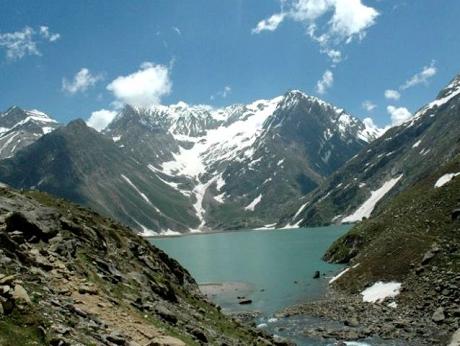Note from the editor: Tomorrow, February 5, is Kashmir Solidarity Day.
See Shahid R. Siddiqi's article on Kashmir published yesterday at
Axis of Logic: Today We Are All Seditious! - LMB
|
|
|
|
A shepherd in Morey Plains |
|
|
|
A mountain lake in Kashmir |
|
|
|
|
Kashmiris are known for their beautiful flowers and pastoral scenes |
|
|
|
|
Kashmiri fishermen on Dal Lake |
|
|
|
A precious cove on Dal Lake |
|
|
|
... and a rare Kashmiri mountain goat! |
|
|
|
A mountain home in Kashmir. We are told that it's a place of cherry blossoms, crystal clear waters, saffron fields and peaceful lakes, stunning gardens and regal Chinar trees. In the mountains, valleys and countryside, Kashmir's splendor and natural beauty is on display throughout the seasons. |
Warning: Disturbing photos of the Indian
occupation of Kashmir follow this article.
Indian occupied Kashmir, once called the paradise on earth, now stands in ruins six decades after it was forcibly occupied by India against the wishes of its people. The peaceful demand for self determination by the Kashmiris in accordance with the Security Council resolutions, the commitment given by India’s founding fathers and the charter of human rights, has met with state violence and repression of unimaginable proportions. Kashmir has seen dramatic abuses of human rights, with the people in chains and their political leaders imprisoned without trial. They have been treated as if they are not human beings, as if they have no rights.
Kashmir Valley is one of the most heavily militarized regions in the world, with over 500,000 armed security forces, who indulge in indiscriminate killing, injuring and maiming of innocent men and women and even small children. Women are raped with impunity. A recent report on Human Rights violations states that that between 1989 to June 30, 2010 the number of Kashmiris killed at the hands of Indian security forces stands at 93,274. Additionally, there have been 6,969 custodial killings, over 107,351 children orphaned, 22,728 women widowed and 9,920 women gang raped. In the month of June 2010 alone, 33 people were killed including four children, 572 people were tortured and injured and 8 women were molested, 117,345 people were arrested and 105,861 houses or structures in the use of the communities were razed or destroyed.
The state or the central governments refuse to explain their actions. They neither investigate human right abuses nor do they punish those responsible. Human rights groups blame the culture of impunity among security forces in Kashmir on a controversial Armed Forces special Powers Act (AFSPA) which grants soldiers wide and unrestricted powers to detain or eliminate suspected terrorists and destroy their property without fear of prosecution. India conveys an impression that it is engaged in an insurgency, a “battle against terrorists”. Critics call this provision a license to kill.
All eyes are on India and all fair minded people of the world wait for the day when it will honor the commitment given by the father of the Indian nation, Prime Minister Jawaharlal Nehru, when he said on November 2, 1947:
“We have declared that the fate of Kashmir is ultimately to be decided by the people. That pledge we have given […] not only to the people of Kashmir but the world. We will not, and cannot back out of it. We are prepared when peace and law and order have been established to have a referendum held under international auspices like the United Nations.”
Warning: Disturbing images of Kashmiri
victims of Indian Occupying Forces below.
Note: These photos were hacked once and removed.
We have now replaced them.
 |
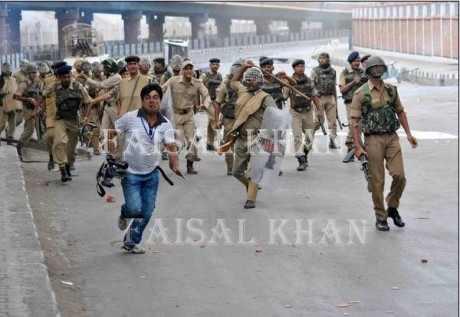 |
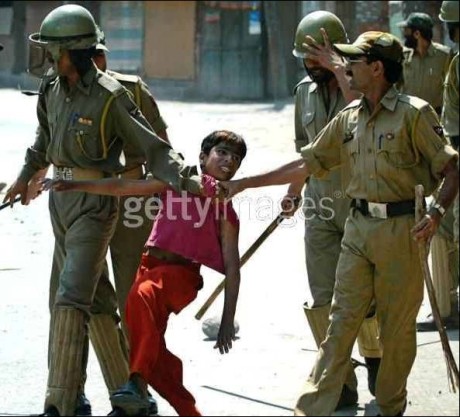 |
 |
 |
 |
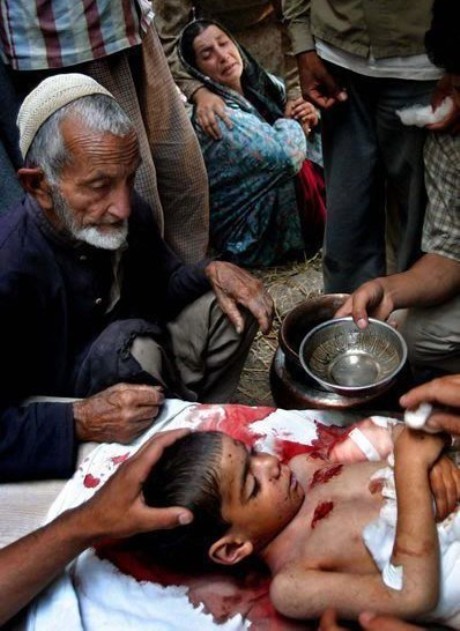 |
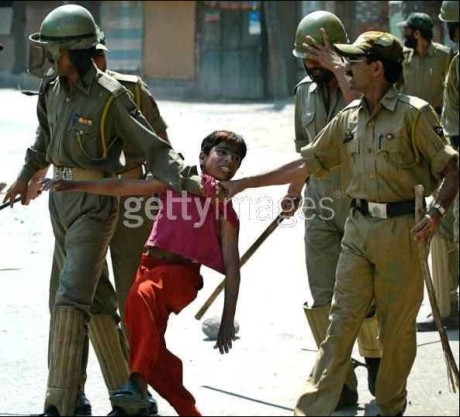 |
 |
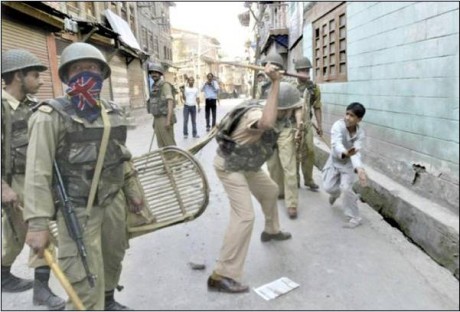 |
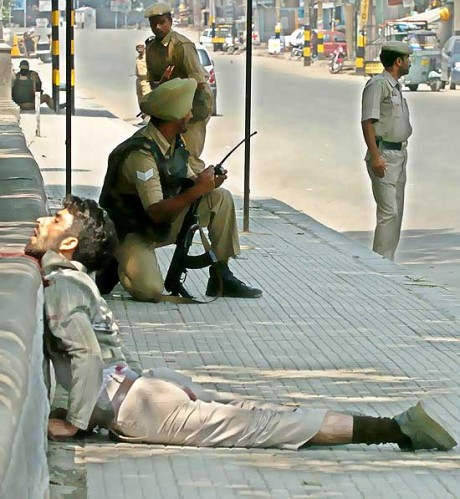 |
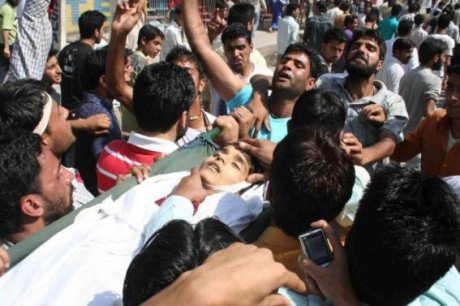 |
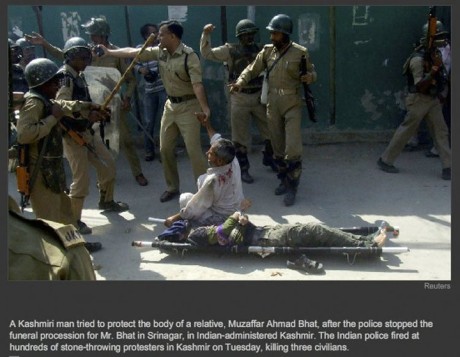 |
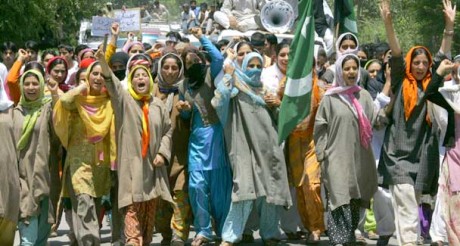 |
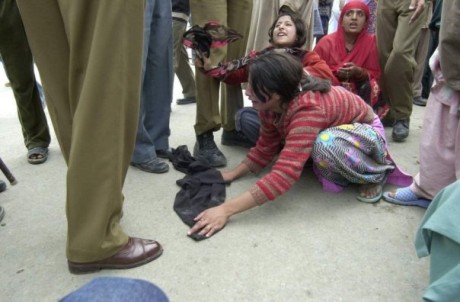 |
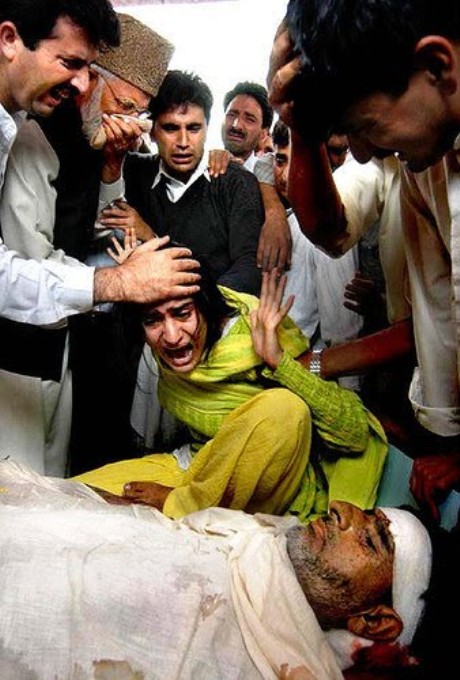 |
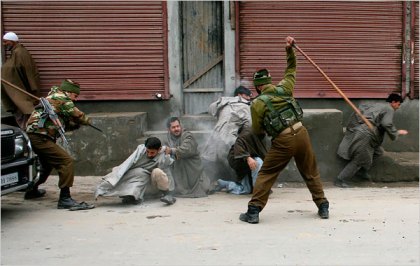 |
| Indian soldiers attacking civilians in Kashmir in 2009 |
 |
| People of Kashmir Demand The Right Of Self Determination |
|
|
| Indian soldiers attacking Kashmiri protestors |
|
|
| A Kashmiri protestor fighting back. |
Read his bio and more analyses and essays by
Axis of Logic Columnist, Shahid R. Siddiqi
Contact the Author
